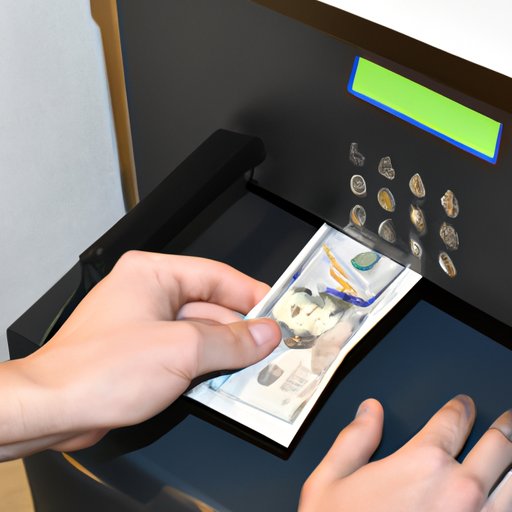
I. Introduction
Money orders are a popular and convenient way to make payments, especially for those who don’t have a credit or debit card or those who prefer not to use personal checks. However, some people may need to deposit a money order into their bank account for various reasons. In this article, we will provide a comprehensive guide on how to deposit a money order into a bank account, including the different types of banks, any specific requirements, and potential stumbling blocks that individuals may encounter.
II. The Ultimate Guide: Depositing Money Orders into Your Bank Account
A money order is a payment order that allows the payer to prepay a specific amount of money to the payee. It is a reliable and secure way of sending money, especially in situations where personal checks may not be accepted. When it comes to depositing a money order into a bank account, the process is quite simple and straightforward. Here are the general steps:
- Visit your bank.
- Endorse the money order.
- Fill out a deposit slip (if required).
- Provide the teller with the endorsed money order and deposit slip (if required).
- Wait for the funds to be deposited into your account.
It’s important to note that banks may have varying requirements for depositing money orders, so it’s best to verify with your bank beforehand. Additionally, it’s crucial to make sure that the amount on the money order matches the amount you wish to deposit and that your account information is correct.
III. Yes, You Can Deposit a Money Order into Your Bank Account: Here’s How
The process of depositing a money order into a bank account may differ depending on the type of bank. For brick-and-mortar banks, individuals must visit the bank to deposit the money order, first. They can then follow the general steps above. For online banks, individuals may be able to deposit a money order through the bank’s mobile application by taking a picture of the endorsed money order and submitting it to the bank. However, some online banks may require individuals to mail the money order to the bank. Therefore, it is best to check with your bank to find out the specific instructions for depositing a money order into your account.
IV. Money Order Deposits: What You Need to Know
While depositing a money order can be a relatively easy process, there are some stumbling blocks that individuals may face. For instance, some banks may have varying policies on depositing money orders or may require an endorsement from the issuing institution. Additionally, there may be a hold time on funds to ensure that the money order clears, which can sometimes take a few days or longer.
To overcome these obstacles, individuals can contact their bank’s customer service department for clarification or check the bank’s website for specific requirements. It is also essential to double-check account information and the money order’s amount and ensure that the endorsement is genuine.
V. Depositing a Money Order: FAQs
Here are some common questions and answers related to depositing money orders:
- Are there any fees for depositing a money order into a bank account? Some banks may charge a fee for depositing a money order, so it is best to check with your bank.
- What should I do if the money order is damaged or lost? If the money order is damaged or lost, contact the issuer to request a replacement or refund.
- Can I deposit a money order into someone else’s account? No, individuals can only deposit money orders into their accounts.
VI. The Pros and Cons of Depositing Money Orders into Your Bank Account
There are both advantages and disadvantages to depositing money orders into bank accounts. One of the main advantages is the convenience of having funds deposited directly into your account without the need to visit a physical location. Additionally, deposited money orders can help build credit and establish a financial history. However, one of the main disadvantages is a potential delay in funds availability or fees. Also, individuals must ensure that the money order is genuine to avoid the risk of fraud.
It is always best to weigh the pros and cons and consider personal circumstances before depositing a money order into a bank account.
VII. Conclusion
Depositing a money order into a bank account can be an excellent option for individuals who need to make payments or receive funds for various reasons. However, the process may differ depending on the bank and may have obstacles such as hold times. By following the general steps and verifying with your bank, depositing a money order into your bank account can be an easy and convenient process.
If you have any questions or concerns, contact your bank’s customer service department for clarification and advice on how to deposit a money order into your account successfully.




